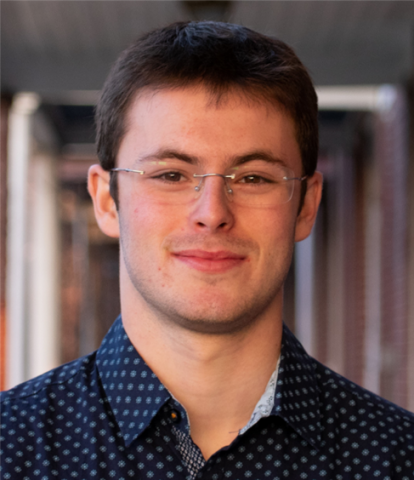Ariel Slepyan – Willard and Marilynn Sweetser Scholar
1st Year Scholar, PhD candidate
Electrical & Computer Engineering
John Hopkins University
Research:
My research is focused on developing ‘CS-Skin’, a next-generation touch sensor mimicking the acuity of human skin. CS-Skin boasts a large area, numerous sensors, and fast response times, replicating human touch. This innovative technology, tested successfully in robotic hands, enhances dexterity and object recognition. CS-Skin has the potential to revolutionize prosthetics, robotics, and everyday surfaces by granting them human-like touch capabilities.
How Will Your Research Benefit Society?
The key benefit of CS-Skin lies in its ability to achieve human-level tactile perception in a scalable way. This paves the way for widespread adoption and integration into various technologies, ultimately improving our ability to interact with the world around us. Benefits include:
- Revolutionizing prosthetics: Amputees could regain a more natural sense of touch, drastically improving their ability to interact with the world and enhancing quality of life for amputees.
- Enhancing robotics: Robots equipped with CS-Skin would be safer and more capable. They could perform delicate tasks with greater dexterity, identify objects by touch, and navigate environments with improved awareness. This could lead to advancements in areas like manufacturing, search and rescue, and even eldercare.
- Widespread touch-based interfaces and interactive displays: CS-Skin has the capacity to equip nearly any surface with human-like touch sensitivity. This opens doors for innovative interfaces in countless areas. Imagine walls that respond to touch gestures, car dashboards that provide tactile feedback, or clothing that can communicate information through touch. This could also transform human-computer interaction, leading to more intuitive and immersive experiences for gaming, education, and various other applications.
How will an ARCS Award Benefit Your Research?
A critical use of the award will be to help cover the costs of fabricating numerous samples and test beds of my CS-Skin that I can showcase and distribute at the conferences I attend. By fabricating many samples of my sensors, I can share them with collaborators so they can use and test them in their own work.
Additional potential benefits include attending conferences and workshops, collaborating with leading researchers outside of JHU, advancing the impact of my research through dissemination of sensors, and paying publication fees at leading, high-impact journals. Being an ARCS scholar will also connect me with a valuable community of scholars and mentors.
Career objectives:
My career objective is to become a university research professor, as I am passionate about mentoring and educating the next generations of students and researchers in cutting-edge technology. I also am excited to start my own lab focused on solving critical real-world problems through high-resolution sensing. I want to immediately build on the innovations of my PhD research to solve problems in robotics and prosthetics, and also adapt my scalable sensing solutions to other sensor modalities. Ultimately, I aspire to build large collaborative centers where academics can converge with industry to foster synergistic development partnerships. By bridging the gap between theory and practice, these collaborative endeavors will accelerate the journey of innovative technologies from the confines of the laboratory to impactful products that benefit society.

